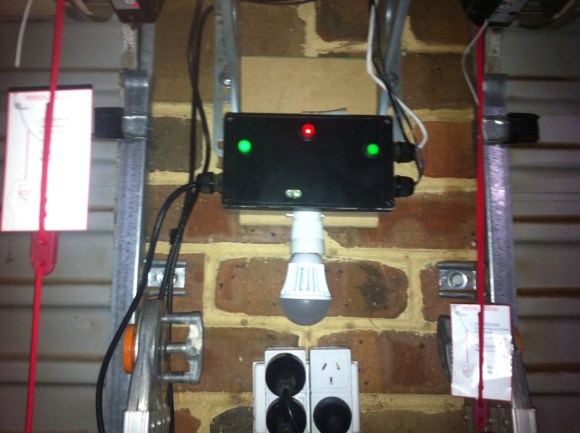
The black box mounted between two garage doors is actually a water heater controller. The entire assembly is a conglomeration of hacks which [Simon] added to his garage over the last four years. We’ll give you a quick rundown, but the entire story is told in his blog post.
Back when the house was built [Simon] was approached by the contractor who offered to throw in remote control for the garage door rollers for just 1500 Australian Dollars (about $1350 with today’s rates). That sounded quite steep to him. He managed to add his own remote control for about a third of the price. But there were a few missing features. Notably, a lack of a light that comes on when the doors open. He also didn’t like that the button inside the garage was on the motor, which is mounted quite high.
Years later his water heater controller needed a firmware upgrade from the manufacturer. Check this out: they replaced the entire controller rather than flashing the PIC 18F2321 inside. What a waste! But in this case [Simon] snagged the old unit, which included several mains rated relays. He connected one up to a light socket seen above, and outfitted several illuminated buttons on its original enclosure. Now he has the satisfaction of a light that comes on with when the door opens, and shuts itself off after a preset delay.
Now his daughter wants smartphone control. But that’s as easy as hacking a Bluetooth headset.















